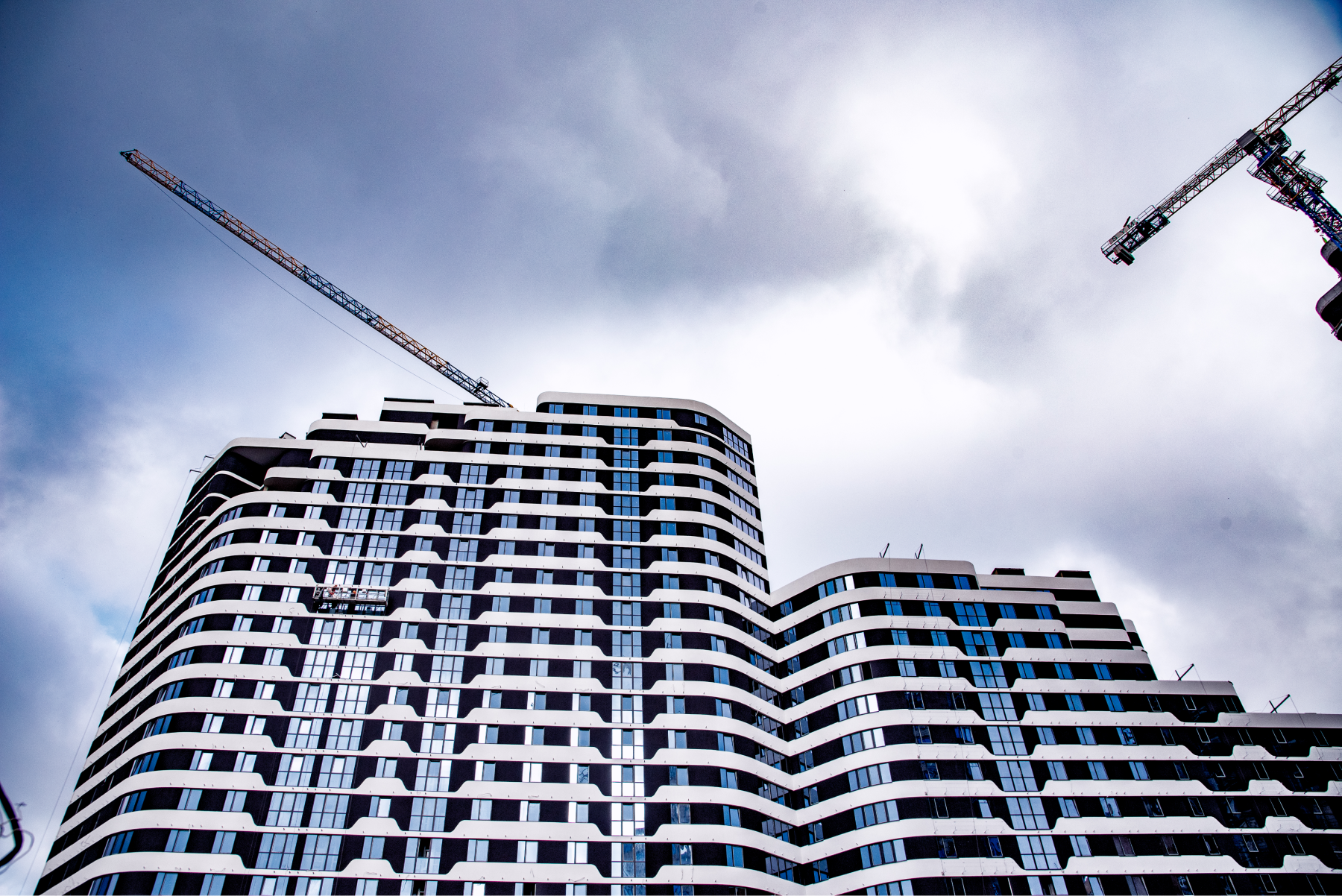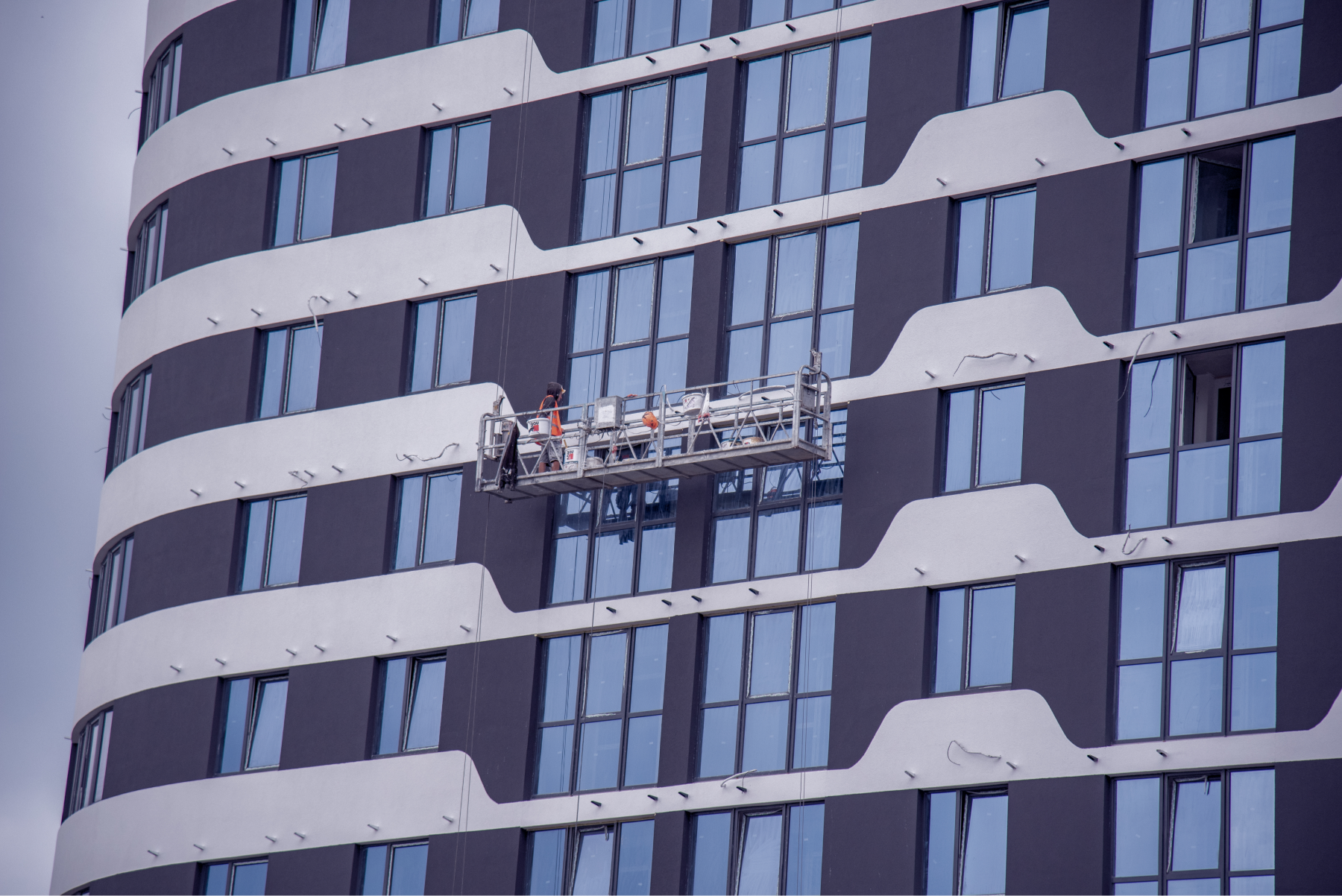The construction market during the war: what housing do Ukrainians choose
[ad_1]
– How did the full-scale war in general affect the work of “Intergal-Bud”? What did you do to save the business in such a situation, and later to resume work?
– Of course, we hoped to the last that the war would not come. But on February 24, 2022, it became clear that it could not be avoided, that the war had come to the country. The situation was unfolding, and at this moment the absolute calm and measured actions of the company’s management became a huge plus for us. In this stressful situation, our leaders did their best, made decisions to protect employees, construction sites and available resources.
In fact, as terrible as all this was, the crisis that occurred on February 24 was not some new situation. At one time, we started building in Kyiv during the 2008 financial crisis. Then all construction sites were closed, nothing happened. And then “Interhal-Bud” comes to Kyiv and immediately starts 2 huge residential complexes of 200 thousand square meters. Then we had our own financing and the opportunity to do it.
The next test was 2014. We had various events: the exchange rate jumped from 8 hryvnias to more than 30, there were economic and political upheavals. That is, we already have, you know, the nervous system of the company’s employees, one might say, hardened. So by the time of full-scale war, we had already seen a lot. And the events were perceived in such a way that we will survive this too. There were no chaotic actions, there was no panic. We did what we could and should have done.
We immediately set up security on construction sites to prevent vandalism, theft of materials and equipment. Next, we contacted the local military administrations. They found out what was necessary for defense – the same concrete blocks, sand, fittings, any materials. All this was transferred, loaded and transported at once.
For employees, management has assessed which areas are the most dangerous. Those who needed shelter were transported to the western regions of Ukraine. Also, even in those months when we didn’t work at all, certain at least small salaries were still paid, so that the staff could feel more or less comfortable, so that people had something to live on, how to support their families.
We went to work quite quickly. The back-office started gathering sometime in May. Clients have been calling us and asking when the accounting department will start working, because they want to pay for rescheduling! In fact, we were even surprised that there were so many willing to pay. But if there was a request, we removed the financial department and the accounting department, and in May we began to restore the construction sites.
Despite the anxiety, despite the danger, almost 80% of our team really wanted to return to the office right away. People said that being in the office, being in working conditions is a reproduction of a normal peaceful life.
– What problems did you face when resuming construction?
– In fact, I even had to deal with demining! Then the question arose, how to safely deliver people to the construction site, how to bring them, where to find new teams? Someone went home to the regions, someone was taken to the Armed Forces or Teroboron.
It was very difficult with logistics, the supply had to be adjusted almost from 0, because many factories were either bombed or they were closed at the beginning of the war, did not work. Ports and air – these channels disappeared, everything switched to the format of rail and road connections. In general, the volumes of those materials that could be counted on decreased very rapidly.

Based on these prerequisites, we made such a strategic decision that it would be unrealistic to restore all objects at once. It will be necessary to choose from something. That is, the restoration will be in stages: the first, second, third and subsequent stages of construction, because otherwise we simply will not have enough workers, materials, or equipment to do it. That’s why we did the simplest thing – we chose the houses that had the highest degree of readiness at the time, where the largest number of apartments were sold, where there were the most commitments. There were objects where literally 3-4 months remained before they were put into operation and the keys were given to people. We focused on such houses, realizing that there people expect the most, and efforts and costs remained small.
– How many projects were unfrozen at the first stage?
– As of the spring-summer of last year, more than 10 buildings were returned to construction, and we managed to put 200,000 square meters into operation during the first year of the war. And, by the way, most of these houses were economy and comfort class. Among the buyers were many displaced people who lost their homes and were very much looking forward to moving into their apartments. We managed to fulfill our obligations as quickly as we could.
Then, starting last fall, the second row of houses, which had a lower degree of readiness, were connected. I will say this, they would build faster, if they did not fade in autumn and winter. Power outages for construction are simply critical. Although we bought generators and prepared, but nevertheless, it greatly affected the dynamics.
As of today, 2 more projects remain to be restored. The rest of the construction has already been restored. Moreover, we are already planning to launch new facilities in Kyiv. New projects have already started in the western region! In Lviv – 3 new housing complexes, and in Chernivtsi – several new lines of current facilities. We don’t just stop, we plan to increase volumes, because we see prospects in the Ukrainian market, despite the war.
– Did you have objects that were damaged by military actions?
– Yes, we have one house that was damaged. This is a complex in Teremki. A fragment of a downed rocket hit. Fortunately, the house was not yet occupied. It was built completely and put into operation, but we simply did not have time to settle people there. So the developer repaired the roof, facade and window structures at his own expense. At the moment, we already have people living there. We are actively continuing the settlement.
In theory, we should get compensation for the destruction, and it might happen someday. But we decided not to make people wait that long. Accordingly, we decided to fix it ourselves.
– How did you adjust the supply of materials, taking into account the fact that Ukrainian enterprises were affected?
– Basic building materials such as: gas block, ceramic block, armature, all metal structures, concrete mixes – Ukrainian production. And when many factories stopped, and many reduced their supply, we suffered a lot. We had to look for alternative options, but in general, the result was the same: prices increased very noticeably. For some items of materials, we received a 2-3 times increase in cost. Accordingly, the increase in the cost price per square meter in some houses amounted to more than 30-40%.

It was impossible to avoid it, it was impossible to find a cheaper one, and to bring it from Europe was also a big expense. And we simply put up with the fact that the margin of our work has decreased. In the conditions of the war, the price could not be raised to the actual increase in the cost price, it was necessary to maintain at least some demand. It was simply necessary to work with new prices and work out with the contractors some possibilities of loyal conditions.
Of course, the cost of materials in Europe is significantly higher than here. Another question is how to bring it in the required amount. But for some positions, we found good alternatives that suited us.
[ad_2]
Original Source Link









